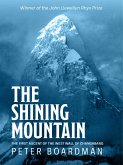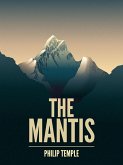Frank Smythe's fascinating book Kamet Conquered tells of his successful bid to make the first ascent of Kamet (7,756 metres) in 1931. Through Smythe, an experienced high-altitude mountaineer, the reader experiences all the tension, fatigue, discomfort and struggle of a major expedition but is also able to enjoy the sublime descriptions of nature at its wildest and most beautiful. Smythe is a keen observer of light, cloud and colour and his spiritual prose conjures up a palpable sense of the Himalaya. There is a rich sense of history within these pages; the book is very much of its time. However, the sometimes harsh colonial attitudes do not eclipse the genuine respect Smythe has for his Indian and Sherpa companions, nor what these remarkable men achieved. Through this journey, we are led from the dank, steamy foothills of the Himalaya, to its harsh and inhospitable peaks as Smythe and his team push themselves to their limits. In his own words: 'A real appreciation of life is made up of contrasts. Civilisation cannot be properly appreciated unless you have lived in the wild ... we had sweated and we had shivered; we had experienced comfort and discomfort; we had gazed upon ugliness and beauty; we had known comradeship; we had found peace.' A must read for any climber or alpinist, or indeed for anyone who yearns for adventure in the mountains.
Dieser Download kann aus rechtlichen Gründen nur mit Rechnungsadresse in A, B, BG, CY, CZ, D, DK, EW, E, FIN, F, GR, H, IRL, I, LT, L, LR, M, NL, PL, P, R, S, SLO, SK ausgeliefert werden.









